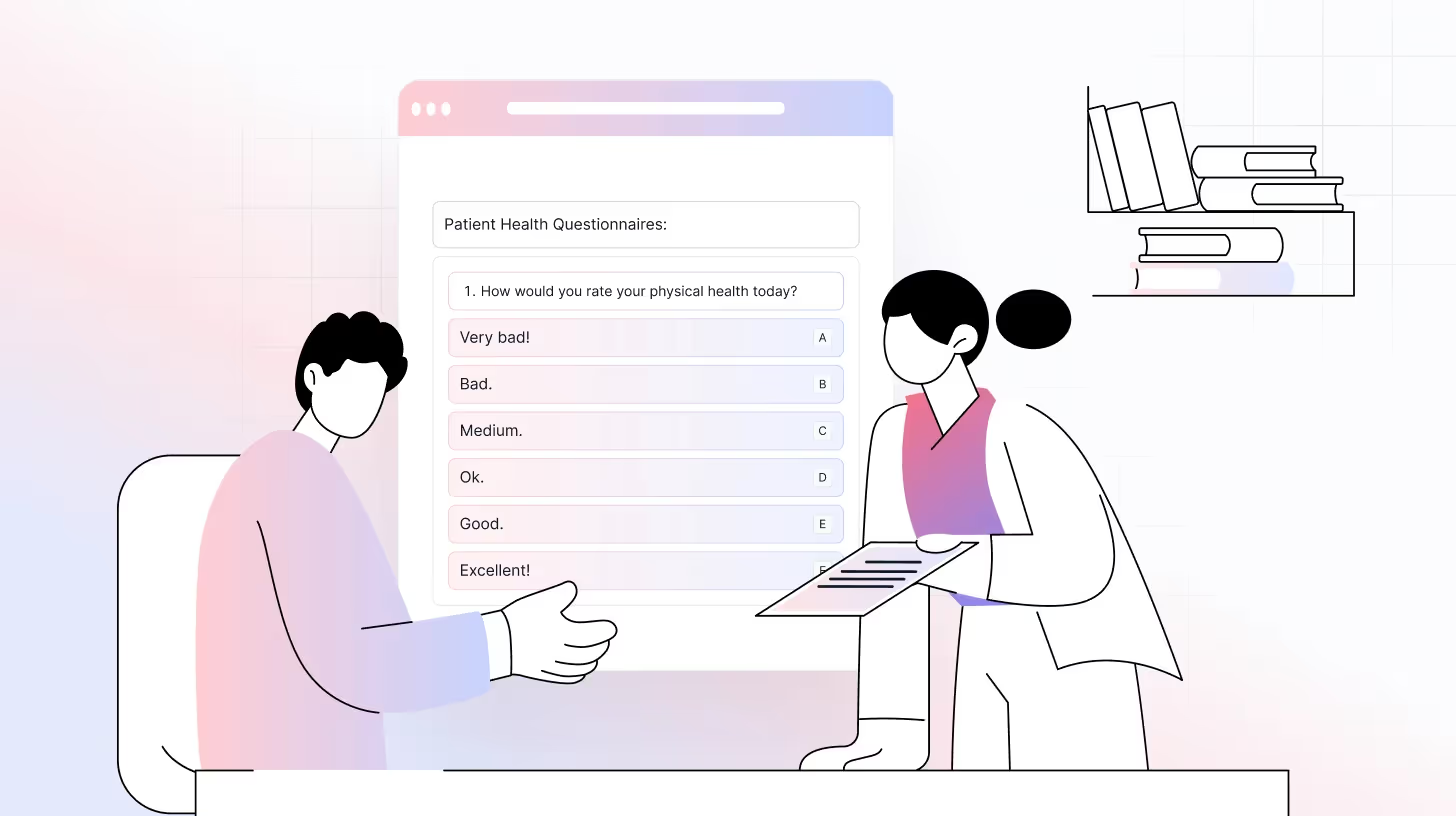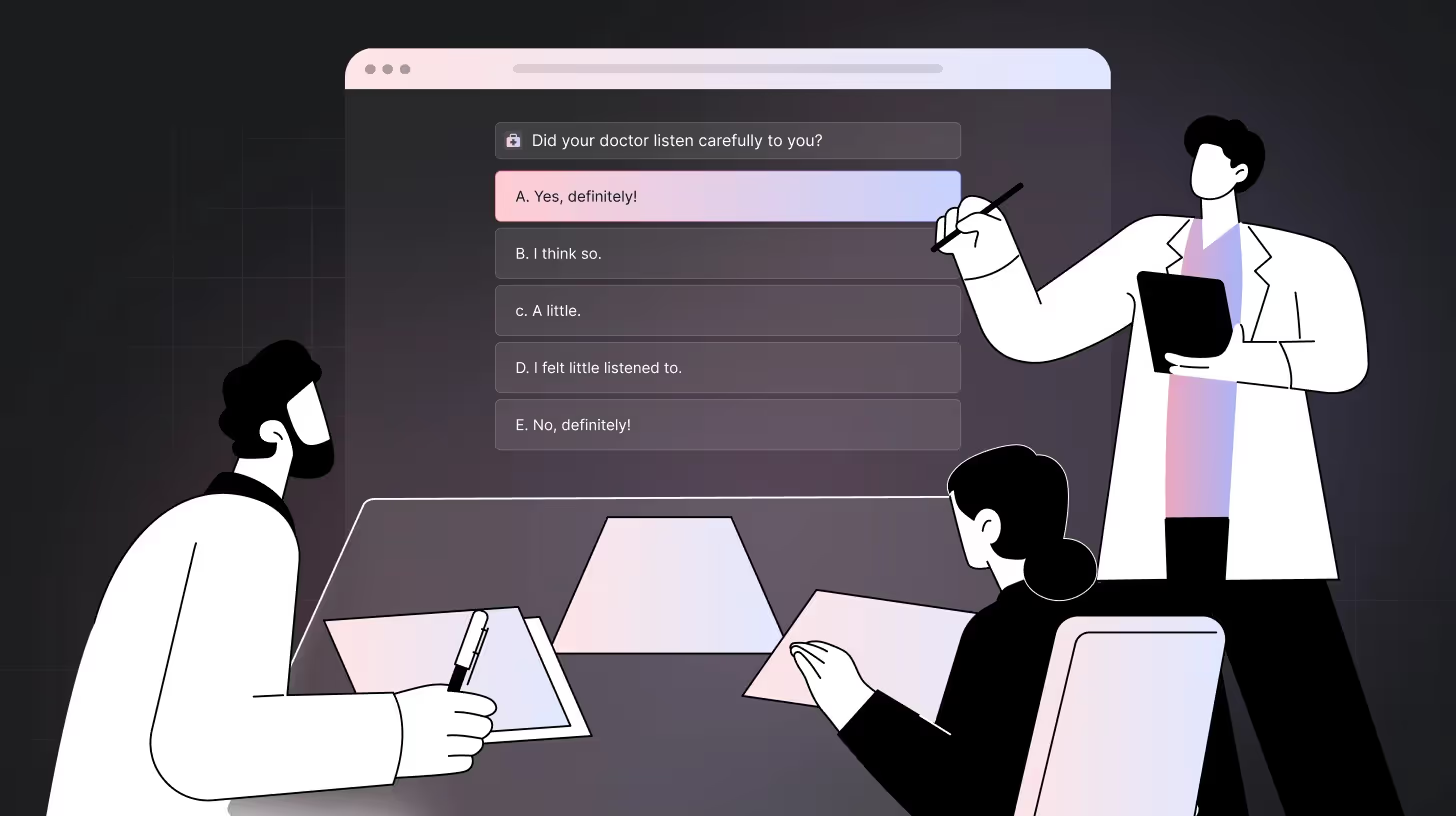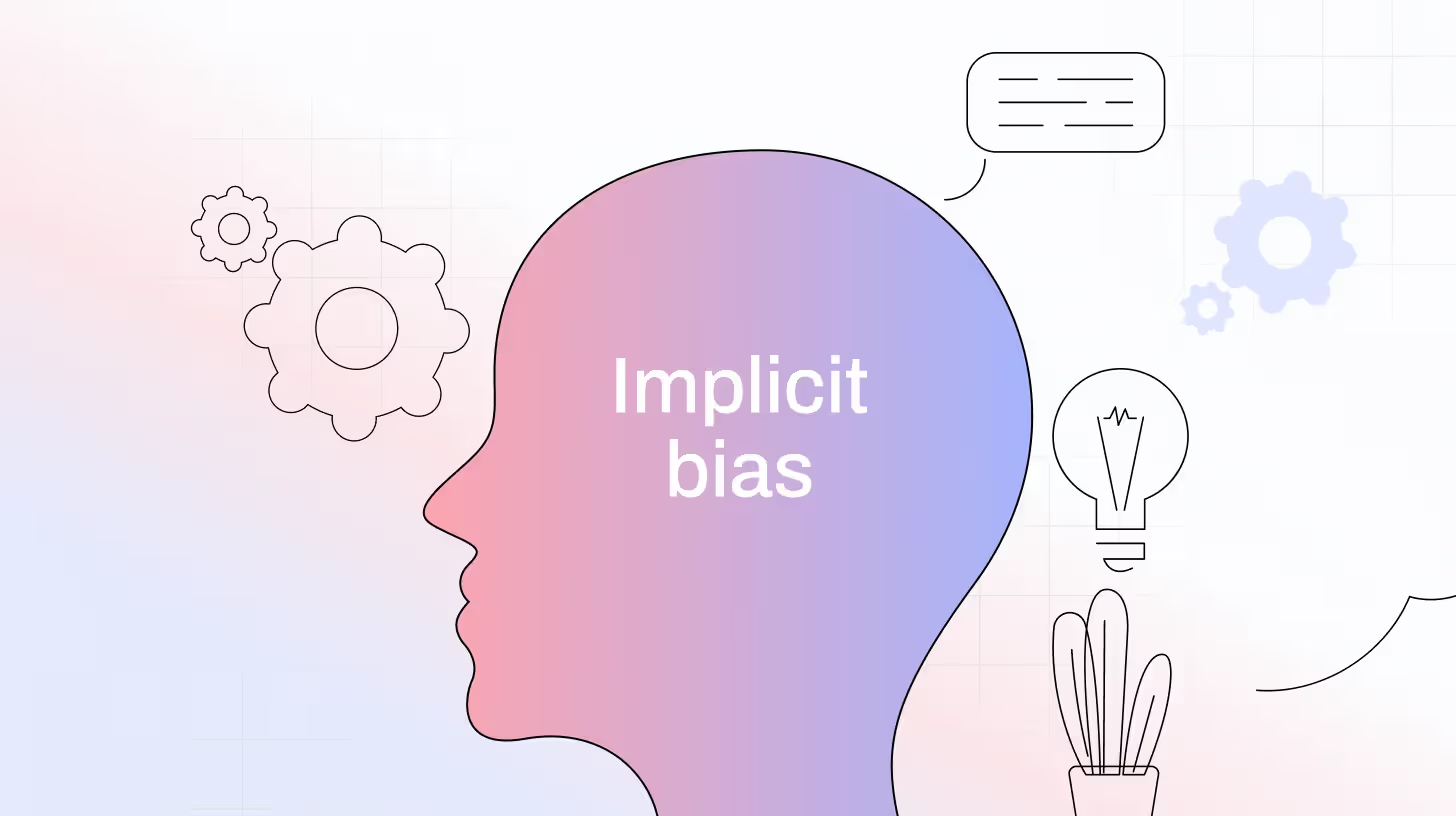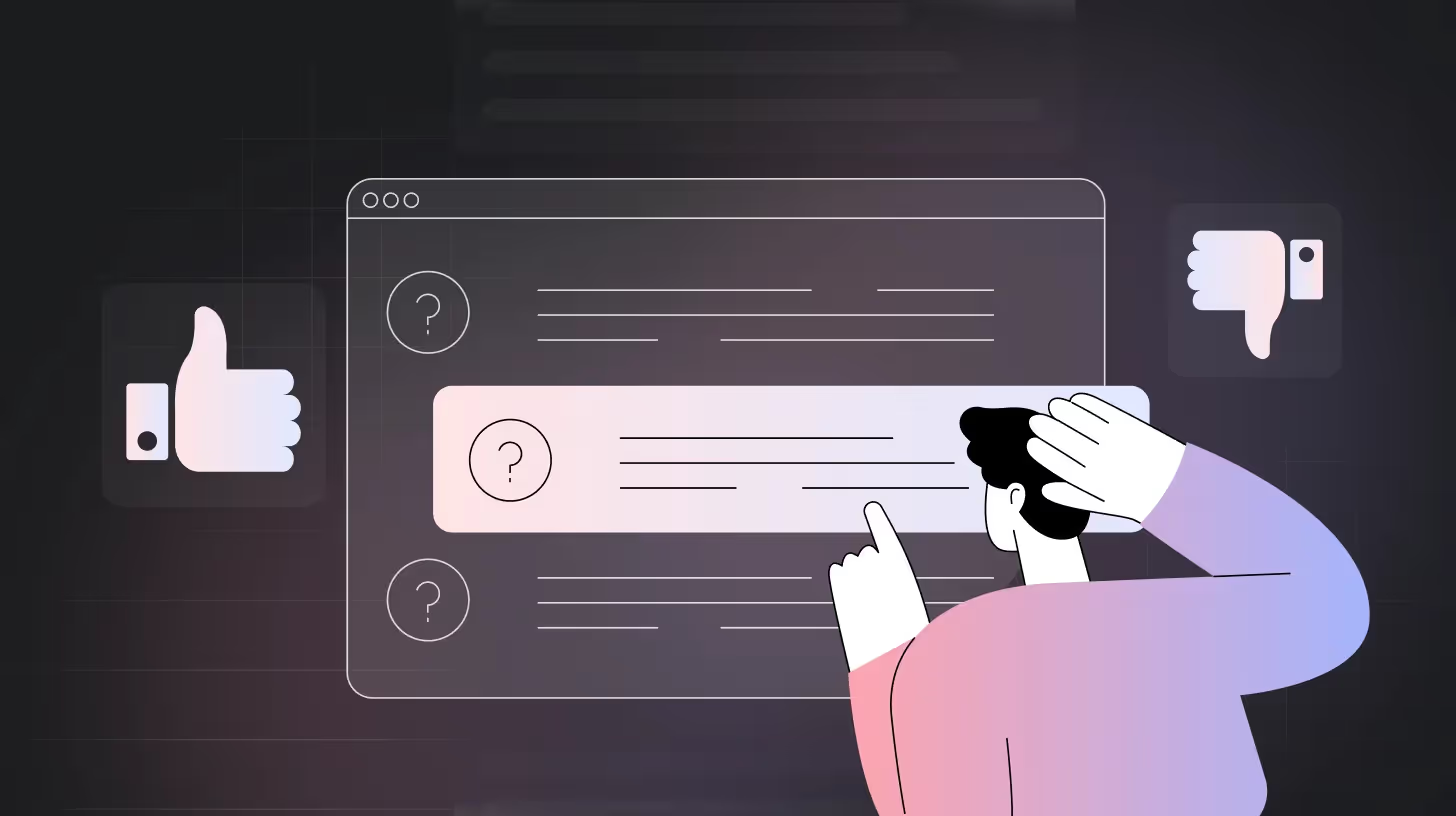How Medical Surveys for Patients Are Improving Healthcare

Patients aren’t just recipients of care, they’re partners. And, like any partnership, effective communication is crucial. That’s why in 2025, healthcare providers aren’t just guessing how patients feel, they’re asking. Increasingly, clinics and hospitals are utilizing medical surveys to listen, learn, and genuinely enhance the care they provide.
Whether it’s a routine clinic visit or a major hospital procedure, every patient interaction offers valuable insights. Patient feedback surveys enable healthcare providers to identify blind spots, improve service quality, and deliver more personalized care.
In this guide, we’ll dive into why medical surveys for patients are becoming such a powerful tool in modern healthcare. What they are, why they matter, the types of questions you should ask, and how platforms like TheySaid are making it easier than ever to create high-response, real-time patient feedback loops.
What Are Medical Surveys for Patients?
Medical surveys for patients are a set of structured questions designed to gather feedback about their healthcare experience. These surveys can appear at various points in the journey: before a diagnosis (such as a health history form), after a hospital stay, or even during treatment at a clinic.
Let’s break it down with a real-world example.
Imagine a patient goes in for a follow-up with their cardiologist. A few hours after the appointment, they get a quick text asking how everything went. The survey inquires about wait times, how clearly the doctor explained the information, and whether the patient felt confident about the treatment plan.
Now let’s say the patient replies: “The doctor was great, but I had to wait 40 minutes.”
That one comment, on its own, might not mean much. But if 10 or 20 other patients say the same thing? Boom, you’ve got a clear pattern. The clinic adjusts its schedule, trims down wait times, and patients start having a better experience.
Also Read: The Ultimate Guide to Medical Market Research Surveys in 2025
Understanding the Importance of Patient Surveys in Healthcare
In today's rapidly changing healthcare landscape, one thing is sure: patient feedback is no longer optional; it is vital. With the rise of digital health, value-based care models, and real-time data, patient surveys have become a vital tool for enhancing treatment quality, fostering trust, and personalizing the patient experience.
These surveys, whether in the form of simple health questionnaires, exhaustive hospital experience surveys, or even paid medical surveys for patients, provide healthcare providers with direct insight into how patients think, feel, and expect to be treated.
Here’s why they’re essential in shaping smarter, more patient-centered care.
Continuous Improvement in Real Time
Clinics and hospitals don’t have to guess what needs fixing. With timely survey data, they can identify gaps in service and make prompt adjustments before minor issues escalate into major problems.
Boost Patient Satisfaction and Retention
When patients feel heard, they are more inclined to return, refer others, and trust their doctors.
Support Regulatory Compliance
Many accreditation agencies now include regular healthcare satisfaction surveys as part of their quality standards.
Smart, Data-Backed Decisions
The more feedback you gather, the more patterns you see. Whether it’s delays in lab results or confusion over prescriptions, survey data helps teams prioritize improvements that matter.
Humanize Healthcare Delivery
When hospitals listen and act on feedback, it fosters stronger patient relationships and more empathetic care.
Also Read: How Medical Surveys Are Powering the Future of Healthcare in 2025
Case Study: How a Simple Patient Survey Helped Older Adults Safely Stop Risky Meds
Dr. Cara Tannenbaum and her team launched the EMPOWER Trial, a project aimed at helping older adults stop taking benzodiazepines — a class of medications often tied to confusion, falls, and even dependence.
However, instead of simply handing out instructions or prescriptions, they took a different approach.
Patients received a short, easy-to-understand handout that asked essential but straightforward questions like:
- “Do you know why you’re taking this medication?”
- “Would you like to talk to your doctor about stopping it?”
And guess what? That tiny shift in communication made a big difference.
27% of patients who received the handout safely stopped taking the medication, compared to just 5% in the group that didn’t receive the survey. Most of them spoke to their doctors within weeks, something that rarely happened before.
The takeaway?
A single, well-crafted medical survey for Patients can start a real conversation, one that leads to safer decisions, better outcomes, and more empowered patients.
Read the full EMPOWER Trial details on PubMed.

The Emotional and Practical Power of Patient Surveys
Let’s be honest, most of us roll our eyes at surveys. But in healthcare, they’re more than just paperwork. When conducted well, medical surveys give patients a genuine voice. They turn quick appointments into conversations that continue after the visit. And that simple shift from silent to heard can lead to better care, stronger trust, and real change.
Here’s why patient surveys matter so much:
Patients finally get to share their side of the story
Doctors and nurses are busy. Visits are short. But surveys give patients space to say what they really thought whether the care was helpful, confusing, or somewhere in between.
“Did your doctor explain things clearly?” That one question can tell a clinic a lot about what’s working and what’s not.
Small comments lead to significant changes.
No one can fix a problem they don’t know exists. When multiple patients say, “I didn’t understand my discharge instructions,” that’s not just a complaint; it’s a red flag. Patterns in patient feedback surveys can help hospitals spot issues early, adjust workflows, and improve communication across the board.
Trust grows when feedback leads to action.
When patients see their feedback actually driving change ,such as shorter wait times, clearer instructions, band etter bedside manners , rust grows. And trust is everything in healthcare. It makes patients more likely to return, recommend the clinic, and adhere to ttheir reatment plans.
It helps patients process their care
Sometimes, answering a question like “Have you felt anxious lately?” is more than just survey data. It’s a moment of self-awareness. Good surveys don’t just help doctors — they help patients better understand what they’re going through.
Some things are easier to write than to say
Not everyone feels comfortable speaking up in person. But they might be more honest in a survey, especially after they’ve had time to think. That written feedback often sparks better follow-up conversations and stronger patient-provider relationships.
Patients get rewarded for sharing (in paid surveys)
In paid medical surveys, patients aren’t just helping researchers; they’re getting something back. Whether it’s $20 or $200, it’s a fair exchange for sharing honest, experience-based feedback on medications, symptoms, or treatment outcomes.
Read: A Practical Guide to Medical Surveys for Physicians in 2025
Types of Medical Surveys for Patients (With Sample Questions)
Different moments in a patient’s journey require different types of surveys. From check-in to discharge, from diagnosis to billing, medical surveys for patients allow healthcare providers to collect timely, relevant, and actionable feedback.
Below are the most common types of patient surveys in healthcare, along with real example questions you can use to improve care quality and patient satisfaction.
1. Patient Health Questionnaires (PHQs)
These are simple check-in surveys that help doctors understand a patient’s physical and mental health, usually before or during treatment.
Example questions:
- How would you rate your physical health today?
- Over the past two weeks, have you had trouble sleeping or focusing?
- Have you been feeling down, anxious, or emotionally low?
Why it matters: Helps with diagnosing conditions, tracking mental health trends, and monitoring changes over time.
2. Hospital Experience Surveys
These surveys are sent after a patient leaves the hospital to gather feedback on their stay, including the room conditions and the care they received.
Example questions:
- Did the nurses treat you with courtesy and respect?
- Did doctors explain things clearly and in simple terms?
- Was your room and bathroom kept clean?
- Did staff respond quickly when you needed help?
Why it matters: Helps hospitals improve patient experience, identify service gaps, and meet care quality standards.
3. Clinical Feedback Forms
These surveys focus on the outpatient experience, how well doctors communicate, how patients feel during consultations, and whether their concerns are taken seriously.
Example questions:
- Did your doctor listen carefully to you?
- Did you feel rushed, or were you given enough time?
- Were your concerns addressed during the visit?
Why it matters: Helps improve doctor-patient communication and ensure every patient feels seen and heard.
4. Post-Visit or Follow-Up Surveys
Sent shortly after a procedure or regular check-up, these surveys help providers understand if patients were left with clear instructions and if they’re doing okay afterward.
Example questions:
- Did you understand your follow-up or discharge instructions?
- Have you had any side effects or complications?
- Did you receive all your prescribed medications?
Why it matters: Improves continuity of care, prevents misunderstandings, and helps reduce hospital readmissions.
5. Paid Medical Surveys for Patients
These surveys are usually part of clinical trials or healthcare research studies. They’re often aimed at people with specific conditions or treatment histories and yes, patients are usually compensated for their time and insights.
Example questions:
- Have you been diagnosed with [condition] in the past year?
- What medications or treatments have you used for it?
- How satisfied were you with your most recent treatment?
Why it matters: These surveys help researchers and pharma companies collect real-world data that leads to better products, safer treatments, and smarter regulations.
6. Digital Health & Telemedicine Feedback Surveys
With virtual visits becoming more common, it’s important to know how patients feel about the digital side of their care, from logging in to talking with their provider online.
Example questions:
- Was it easy to join your video appointment?
- Did your doctor seem attentive during the virtual visit?
- Were you happy with the audio and video quality?
Why it matters: Helps providers improve telehealth platforms, troubleshoot tech issues, and make sure virtual care feels just as personal and effective as in-person visits.
7. Administrative & Operational Surveys
These surveys focus on the “non-medical” aspects of a patient’s experience, such as the ease of scheduling a visit, the handling of billing, and the length of wait time.
Example questions:
- How easy was it to book your appointment?
- Were you satisfied with how your bill was explained?
- How long did you wait before seeing your doctor?
Why it matters: These insights help clinics streamline the day-to-day operations that shape the patient journey and reduce frustration before it even starts.
Best Times to Send Medical Surveys for Patients
The timing of a patient survey can make or break its response rate and usefulness. Send it too early, and the experience isn’t fully processed. Too late, and patients forget key details or lose interest.
Use this table to guide your survey strategy across the full care journey:
How Healthcare Providers Use Patient Survey Data
Patient surveys reveal service gaps that staff might overlook, such as unclear directions, long wait times, or missed follow-ups. A clinic improved arrival efficiency after multiple patients mentioned confusing signage.
Healthcare feedback often highlights communication gaps. When patients struggle to understand medical terms, providers can simplify explanations for better treatment compliance. One practice switched to plain language and saw a rise in post-visit understanding.
Survey data helps fix administrative frustrations, like slow appointment booking or delayed billing. After feedback about long hold times, a hospital adopted a call-back system that reduced call drop-offs.
Feedback from medical surveys shows where the patient journey stalls. When patients flagged delays during check-in, a clinic introduced self-service kiosks, cutting wait times by half.
Responses help tailor follow-up communication to patient preferences. A care center switched from email to SMS reminders after seniors reported missing emails, and no-shows dropped significantly.
Honest reviews from patients guide targeted staff training.A pattern of cold interactions at lab check-ins led to soft skills training for frontline staff, boosting satisfaction.
Real-time survey alerts catch potential risks early. One patient mentioned dizziness in feedback the nurse called within an hour and prevented a hospital visit.
Patient satisfaction surveys provide ongoing insight into performance trends. A clinic tracked feedback monthly and linked faster lab turnaround with improved satisfaction ratings.
Survey results support compliance with healthcare quality standards like value-based care and accreditation programs.Data pulled from patient experience surveys helped a hospital prepare for a Joint Commission review.
Open-ended feedback in patient questionnaires often sparks new ideas. When several patients mentioned dry waiting rooms, a clinic added a free water station, a small change with high impact.

Best Practices for Creating Medical Surveys That Patients Actually Answer
Start with a Clear Purpose for Each Patient Survey
Before sending any survey, ask yourself: What do I want to learn from this? Are you trying to improve wait times? Check satisfaction after a telehealth session? Or follow up on a new medication? A focused survey gives you clearer, more useful answers and respects the patient’s time.
Choose the Right Type of Survey for the Moment
Not every patient interaction is the same, so your surveys shouldn’t be either.
- After a clinic visit? Use a short post-visit survey.
- After a hospital stay? Send a discharge feedback form.
- Doing remote care? A telehealth satisfaction survey works best.
Select the method that aligns with the patient's current stage in their journey.
Use Friendly, Simple Language — Not Medical Jargon
Patients respond better to conversational questions. Swap “Were the clinical outcomes satisfactory?” with “Did you feel better after your treatment?” Open-ended questions like “Was anything confusing today?” give patients space to share what truly matters.
Automate Survey Delivery Based on Patient Activity
Use platforms like TheySaid to automate survey timing based on real-world patient actions, such as check-ins, discharges, or virtual visits. This ensures you receive the right feedback without bothering patients manually.
Turn Patient Feedback into Insights (Fast)
Don’t just collect data — understand it. Use AI tools to tag themes like “billing confusion” or “long wait,” and track patient sentiment over time. Spotting trends early means problems get fixed sooner.
Take Action (and Let Patients Know)
The best way to build trust? Show patients you’re listening. If feedback mentions a noisy waiting room, address it and consider following up to say, “Hey, we made a change.”
This simple loop turns surveys into real service improvements.
Share What Changed and Keep Improving
Don’t let survey results gather dust. Use dashboards or monthly reports to show your team what’s improving and where to go next. Patients appreciate transparency, and staff stay motivated when they see real impact.
Create Medical Surveys for Patients with TheySaid
Creating patient surveys doesn’t have to take hours with TheySaid, it’s literally a one-click process. Just tell the platform the purpose of your survey (like follow-up after discharge, medication feedback, or mental health check-ins), and the AI handles the rest. It instantly generates a tailored, patient-friendly survey — no coding, no complex setup. Then, TheySaid follows up with patients in real time and actually holds a conversation, not just collects answers. The result? You don’t just get data you get real, honest feedback that tells you why patients feel the way they do. It's fast, smart, and built for healthcare teams that want to truly listen.
Ready to hear what your patients think?
Try TheySaid today and start turning quick surveys into deep, meaningful insights — all with zero manual effort.
Key Takeaways
- Patient feedback isn’t just helpful — it’s critical for improving care quality, reducing friction, and showing patients that their voices matter.
- Short, clear, and well-timed surveys (like right after a visit or discharge) get higher response rates and better insights that healthcare teams can actually use.
- When survey feedback reveals trends like long wait times or confusing instructions, clinics can act fast and fix what’s broken before it becomes a bigger issue.
- Paid medical surveys offer real value to both sides: patients get rewarded for their time, and researchers gain experience-based insights to build safer, smarter treatments.
- Platforms like TheySaid enable providers to automate, personalize, and engage in real-time conversations with patients, transforming a simple survey into a dynamic feedback loop that drives meaningful change.
FAQs
What are medical surveys for patients?
Medical surveys are brief questionnaires sent to patients before, during, or after care to gather feedback on their experience, satisfaction, or treatment outcomes.
Do patient surveys really help improve healthcare?
Yes, absolutely. When used appropriately, patient surveys highlight pain points such as long wait times, poor communication, or confusing instructions. Acting on this feedback helps providers offer more personalized, respectful, and effective care.
Are paid medical surveys legitimate?
Yes, many paid surveys are part of research studies or clinical trials and offer fair compensation for your time. Just make sure the organization running the survey is reputable and transparent about how your data will be used.





.webp)









.svg)